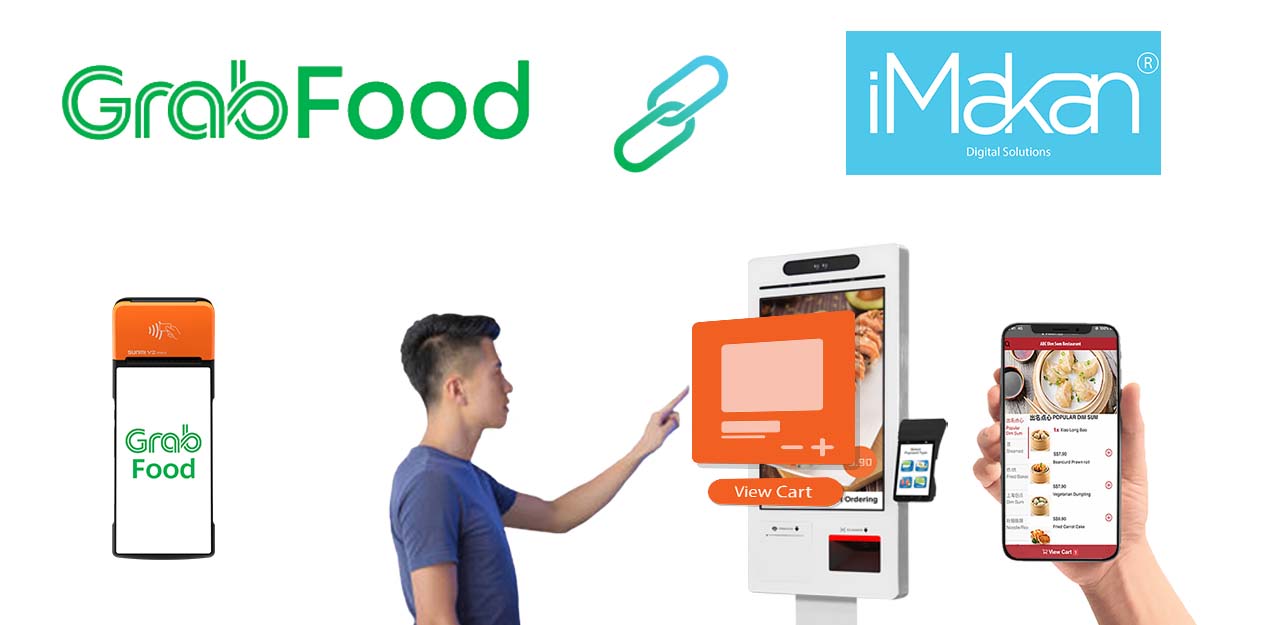
iMakan has integrated our QR ordering system, self-ordering kiosk and GrabFood’s order and menu management into a single iMakan online portal.
What is iMakan?
iMakan looks to help F&B merchants digitalize their order taking processes with digital solutions like QR ordering and self-ordering kiosks.
Benefits of Digital Ordering
Manpower
Through digital ordering solutions, F&B merchants are able to reduce dependence on manual work, therefore lowering their manpower costs.
Larger Average Bill Size
On top of that, some of our clients have also reported an increase in average bill sizes. This could be attributed to the upselling function of iMakan’s digital menu that provides customers with add on suggestions when they place their orders.
Digital ordering solutions, especially a QR ordering system allow your customers to browse your digital menu and have a better understanding of your menu items at their own pace. This gives your customers a comfortable environment to order without the pressure of making quick decisions when an order taking staff is around, which contributes to larger orders.
Removes ordering bottlenecks
By adopting a contactless ordering system your customers do not have to wait for an order taking staff to place their orders.
With a QR ordering system, your customers scan an ordering QR code and place their orders whenever they are ready. This will allow your customers to place orders simultaneously without waiting for an order taking staff to be available, thus removing ordering bottlenecks.
With self-ordering kiosks, you are able to deploy multiple ordering kiosks to add ordering stations to your F&B outlet, thus, moving the queue faster.
Accurate order management
As orders are sent digitally to your POS system which then itemizes the orders and sends order items to each kitchen section’s respective kitchen printers. By digitalizing ordering and order management, your F&B business is able to achieve 100% order accuracy.
GrabFood Integration with iMakan
Why GrabFood
After gathering feedback from our F&B clients, GrabFood came up as the most widely adopted online food delivery platform and contributes to the highest amount of online food orders that our F&B clients receive.
Hence, the iMakan prioritized GrabFood as the first online food delivery platform to kick start our integration with various food delivery platforms in Singapore.
How does the iMakan x GrabFood integration work?
Order management
When orders come in from the GrabFood platform, they will be sent to your POS system and your iMakan order management device. Your POS system will automatically itemize orders and fire them to the respective kitchen sections.
This eliminates the need for your staff to re-enter orders from the GrabFood order management device into the POS system, which is a manual process susceptible to human error.
Menu Management
With iMakan’s integration to GrabFood, you are able to manage your QR ordering system, self-ordering kiosk and GrabFood menu through a single portal. This means that updating your menu across all digital ordering platforms to include new dishes, set menus or promotions can be done from a single online portal and your digital menus across all platforms will be instantly updated.
If you are interested in getting iMakan digital ordering solutions with GrabFood integration, click on this link to speak with our solution consultants today.











